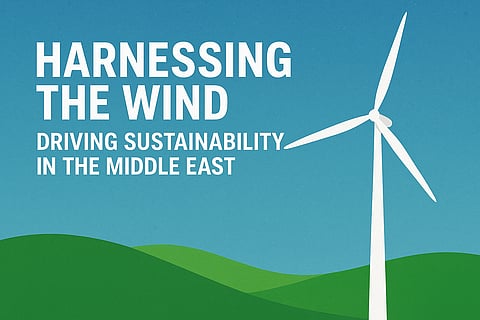Harnessing the Wind: Driving Sustainability in the Middle East
The Middle East has long been associated with oil and gas, but the region is now taking bold steps toward a greener future. Among various renewable energy sources, wind power is emerging as a critical player in diversifying energy portfolios, reducing carbon footprints, and driving sustainable development.
With its vast deserts, long coastlines, and growing energy demand, the Middle East is uniquely positioned to leverage wind energy as a cornerstone of sustainability.
The Push for Renewable Energy
Governments across the region are setting ambitious targets to reduce dependence on fossil fuels. Countries like Saudi Arabia, the United Arab Emirates (UAE), Oman, and Egypt have introduced renewable energy strategies as part of their broader visions for economic diversification and climate resilience. Wind energy, in particular, is gaining momentum thanks to favorable geography and global advances in technology.
Wind Energy Potential in the Region
While solar energy has dominated the Middle Eastern renewable landscape, wind energy offers significant untapped potential.
Egypt leads the way with large-scale wind farms along the Gulf of Suez, where strong and consistent winds make it one of the most promising wind corridors globally.
Saudi Arabia has integrated wind power into its Vision 2030 strategy, with the Dumat Al Jandal wind farm—currently the largest in the region—already producing clean electricity for thousands of homes.
Oman is capitalizing on its coastal winds with projects like the Harweel wind farm, the first large-scale wind project in the Gulf Cooperation Council (GCC).
These developments highlight how wind can complement solar power to ensure a balanced renewable energy mix.
Economic and Environmental Benefits
Wind energy supports sustainability in multiple ways:
Reduced Carbon Emissions: Every megawatt generated by wind reduces reliance on fossil fuels, lowering greenhouse gases.
Energy Security: Wind diversifies energy sources, reducing vulnerability to oil price volatility.
Job Creation: From construction to operations, wind projects create skilled jobs, fostering local expertise in clean technology.
Cost Competitiveness: With declining installation costs, wind energy is now one of the most affordable renewable power sources worldwide.
Overcoming Challenges
Despite the potential, challenges remain. Infrastructure development, grid integration, and financing models need scaling up. Harsh desert conditions, such as sandstorms and extreme heat, also demand durable technology solutions. Regional cooperation and public-private partnerships will be key to overcoming these barriers.
The Future Outlook
Wind energy, paired with solar and hydrogen, is set to reshape the Middle Eastern energy landscape. As governments pursue net-zero pledges, investing in wind power will not only ensure cleaner air and reduced emissions but also align the region with global sustainability trends. Importantly, it positions the Middle East as a leader in the global energy transition, not just a participant.
Conclusion
The winds of change are sweeping through the Middle East. Once known for oil wealth, the region is now harnessing its natural resources—this time, the wind—to fuel a sustainable, diversified, and resilient future. By embracing wind energy, the Middle East is proving that even in a land of oil, the future belongs to renewables.


